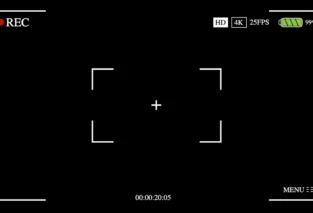
Have you ever worried about how to protect your valuable video content from theft and unauthorized distribution? In today’s digital world, where content can be copied and shared with a single click, this is a critical concern for every content creator, from filmmakers and educational publishers to webinar hosts. However, with various terms like DRM, watermarking, and Content ID floating around, choosing the right protection method can be confusing.(read more How to Seamlessly Integrate VidProtect with Your WordPress LMS )
Don’t worry. As a content security expert, I’m here to demystify these concepts for you in simple terms. I’ll show you how to leverage powerful tools to completely safeguard your digital assets. In this comprehensive guide, we will break down the key differences between these three technologies and introduce VidProtect.site as a leading, all-in-one solution for robust video protection.
Part 1: Understanding the Fundamentals of Content Protection
Before diving into the differences, let’s get a clear understanding of each technology. Each method provides a different layer of security, and they are often used in combination to create an impenetrable fortress for your content.(Read more A Practical Security Checklist for Launching Online Video Courses)
1. Watermarking: Your Digital Signature on the Content
Watermarking is the simplest and most well-known protection method. Imagine a painter signing their name in the corner of their artwork. A watermark does the exact same thing in the digital realm.
What is a Watermark? A watermark is a semi-transparent text, logo, or image overlaid on a video. Its primary purpose is to assert ownership and deter unauthorized use by displaying the creator’s name or brand. Watermarks fall into two main categories:
- Visible Watermark: This is the logo or text you typically see in the corner of videos. While it can act as a deterrent, determined individuals can often use video editing software to crop, blur, or remove it.
- Invisible/Forensic Watermark: This type of watermark embeds ownership information as invisible code within the video file itself, undetectable to the naked eye. It is highly effective for tracking and providing evidence in copyright infringement cases but does not, by itself, prevent the video from being downloaded or copied.
Pros:
- Asserts ownership and helps with branding.
- Relatively easy to implement.
- Acts as an initial deterrent.
Cons:
- Visible watermarks can be easily removed.
- Does not prevent unauthorized downloading or distribution on its own.

2. Content ID: The Digital Detective for Tracking Content
A Content ID system is a highly advanced technology used by platforms like YouTube to manage copyrights on a massive scale. It functions like a digital detective.
How Does Content ID Work?
- Asset Registration: The content owner (e.g., a movie studio) submits their original video to the Content ID database. The system creates a unique digital “fingerprint” of this video.
- Scanning and Matching: The system continuously scans all videos uploaded by users to the platform, comparing their fingerprints against the database.
- Automated Action: If a match is found (meaning a part of your video was used in another user’s upload), the system automatically enforces a policy you’ve predetermined:
- Monetize: Ads are placed on the infringing video, and the revenue is directed to you.
- Track: You receive analytics on the copied video’s viewership.
- Block: The video is blocked from being viewed in some or all countries.
Pros:
- Extremely effective for tracking unauthorized use on major platforms.
- Allows for monetization of pirated content.
- The process is fully automated.
Cons:
- Limited Access: This system is proprietary to specific platforms like YouTube and Facebook and is not publicly available. You cannot use it to protect educational videos on your personal website.
- Reactive, Not Proactive: Content ID doesn’t prevent the initial download or distribution; it identifies and manages content after it has been uploaded.
3. Digital Rights Management (DRM): The Ultimate Lock on Your Content
DRM, or Digital Rights Management, is the most powerful and comprehensive technology for content protection. If a watermark is a signature and Content ID is a detective, then DRM is an impenetrable digital safe.
What is DRM and How Does it Work? DRM is a technology based on encryption. Here’s how the process works:
- Content Encryption: Your video file is encrypted using complex algorithms. The encrypted file is unplayable and useless on its own.
- Key Management: To play the video, the user’s device needs a digital “key.” This key is managed by a secure License Server.
- Authentication and License Issuance: When an authorized user (e.g., someone who purchased your online course) tries to play the video, their player sends a request to the License Server. After verifying the user’s identity and permissions, the server issues a unique, often time-limited license containing the decryption key.
- Secure Playback: The key decrypts the video in real-time on the user’s device. This entire process happens within a secure, protected environment, and the key is never exposed to the user.
This technology effectively prevents all forms of unauthorized downloading, screen recording, and file sharing. Major streaming services like Netflix, Spotify, and Amazon Prime Video all rely on DRM to protect their content.(read more AI-Powered Video Protection in WordPress)
Pros:
- Highest Level of Security: Completely prevents unauthorized downloading, copying, and distribution.
- Full Access Control: You decide who can access the content, when, and under what conditions (e.g., limited offline access).
- Screen Recording Prevention: Advanced DRM systems can block screen recording tools.
Cons:
- Can be technically complex to implement from scratch.
- Requires a robust and specialized server infrastructure.

Part 2: Comparison Table: DRM vs. Watermarking vs. Content ID
Part 3: VidProtect.site – A Comprehensive Solution for Video Security
Now that we understand the differences, the key question is: “As a content creator, how can I easily and affordably implement the highest level of security, DRM?”
The answer is VidProtect.site. VidProtect is a specialized platform that eliminates the technical complexities of DRM, offering it as a user-friendly and comprehensive service. By intelligently combining DRM with dynamic watermarking, it provides a 360-degree security solution for your videos.
Key and Unique Features of VidProtect
VidProtect is more than just a simple DRM service; it’s a suite of powerful tools designed to meet the needs of modern content creators.
1. Multi-DRM Technology
VidProtect supports multiple DRM technologies from the world’s leading tech companies simultaneously this ensures your content is protected with the highest security standards across all major platforms and browsers.
2. Dynamic Watermarking
This is one of VidProtect’s most intelligent features. Instead of a static watermark that can be removed, the service displays user-specific information (like their IP address, username, or a unique ID) as a subtle, moving watermark on the video. This feature offers two major benefits:
- Psychological Deterrent: No one wants to record and leak a video that has their personal information visibly stamped on it.
- Traceability: Even if someone records the screen with an external camera, the source of the leak can be easily identified.
3. Screen Recording Prevention
The DRM system implemented by VidProtect is engineered to detect and block screen recording software. When a user attempts to record the screen, the output is a black screen, rendering this common method of piracy completely useless. This is a crucial feature for anyone selling high-value content like educational courses.
4. Secure Video Hosting and Processing
You don’t need to worry about complex infrastructure. Simply upload your video to the VidProtect dashboard. All the encoding, encryption, and storage processes are handled on their secure, high-speed servers. You receive a secure link or embed code to place on your website.
5. Full Compatibility with WordPress and Learning Platforms
VidProtect integrates seamlessly with content management systems like WordPress and various Learning Management Systems (LMS). You can easily display your protected videos anywhere on your site, including within courses built with plugins like LearnDash or MemberPress.
6. Fair Pricing and Expert Support
Unlike many enterprise-level DRM services that come with exorbitant costs, VidProtect offers flexible and transparent pricing plans suitable for businesses of all sizes, from independent instructors to large educational organizations. Their dedicated support team is available to assist you every step of the way.
Part 4: Frequently Asked Questions (FAQ)
Here are answers to some common questions you might have.
1. Is a simple watermark enough to protect my online course? No. As discussed, visible watermarks are easily removed, and they do nothing to stop a user from downloading your video with common browser extensions. A watermark is a good supplementary tool, but it is entirely insufficient for protecting paid or premium content.
2. I upload my videos to YouTube. Do I still need DRM? If your goal is to monetize through YouTube ads and reach a broad audience, YouTube’s native Content ID system is sufficient for your needs. However, if you intend to sell your videos directly and want to prevent them from being freely accessible, you must host them on your own website using a DRM service like VidProtect.
3. Will using a DRM service like VidProtect create a difficult user experience for my audience? Not at all. The beauty of modern DRM solutions like VidProtect is that the entire security process is invisible to the end-user. Your customer clicks the play button and enjoys the content just like any other video, completely unaware of the complex encryption and license exchange happening in the background.
4. Can my users download videos to watch offline? This is completely under your control. DRM allows you to set specific rules. For example, you can permit users to download a video for offline viewing within your dedicated app for a 7-day period, after which the license expires and the video becomes unplayable. This is the same model used by services like Netflix.
5. How much does the VidProtect service cost? Pricing is typically based on your storage and bandwidth usage. VidProtect offers a variety of plans designed to fit any budget, from individual creators to large corporations. The best way to get accurate information is to visit the VidProtect.site website and review their current pricing models.
Final Conclusion: Which Solution is Right for You?
Choosing the right tool depends entirely on your goals:
- If you are only focused on branding and basic ownership assertion, a simple watermark will suffice.
- If your content lives on YouTube and you want to manage or monetize copies, rely on Content ID.
- However, if you are a serious content creator looking to sell online courses, webinars, films, or any premium video content, your only viable and secure option is a robust DRM service.
In this context, VidProtect stands out as an unparalleled choice. By combining multi-layered DRM security, the powerful deterrence of dynamic watermarking, and an easy-to-use platform, it offers a complete peace-of-mind solution. By entrusting your content’s security to VidProtect, you can focus on what you do best: creating high-quality, valuable content.



